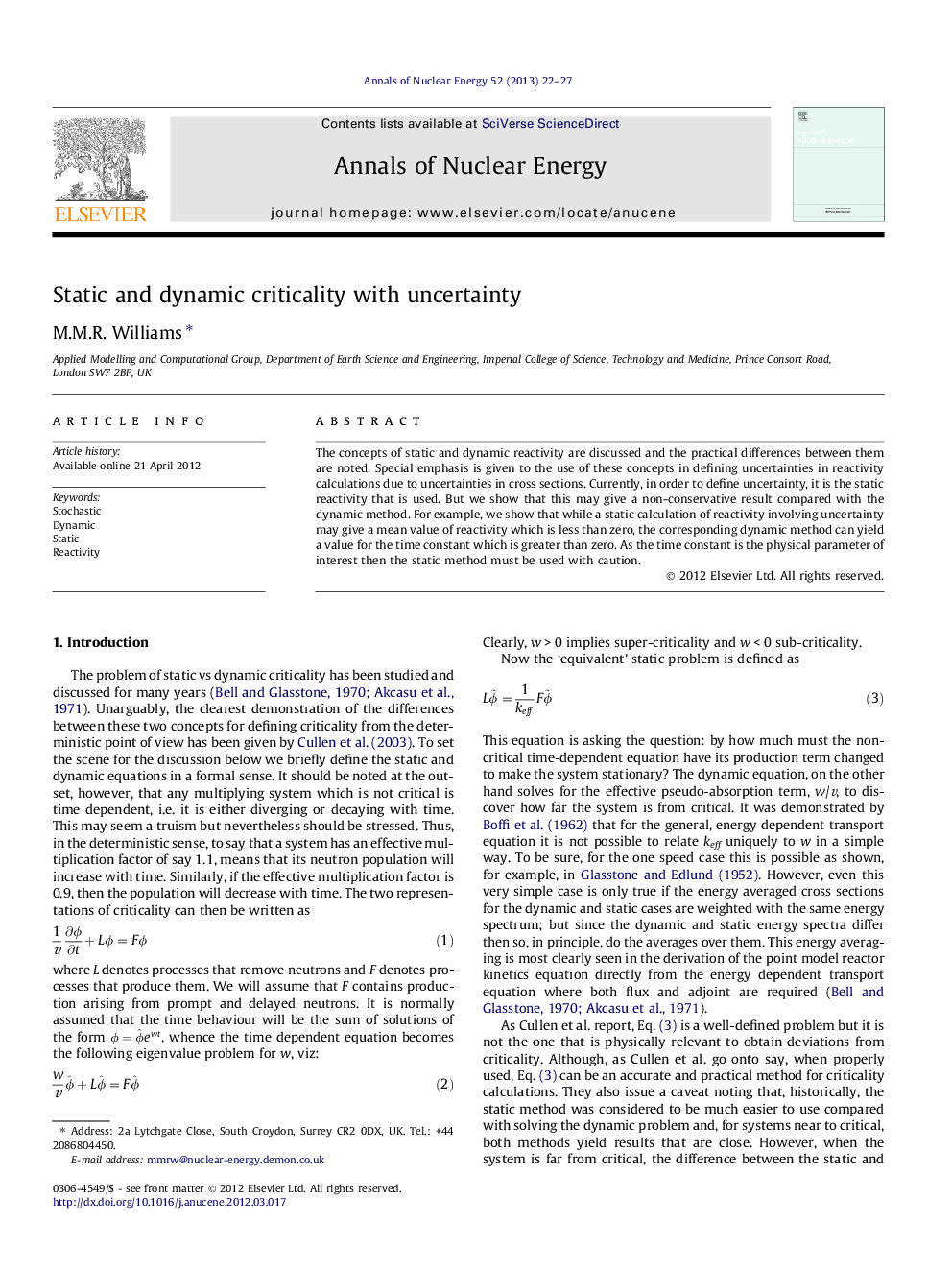| کد مقاله | کد نشریه | سال انتشار | مقاله انگلیسی | نسخه تمام متن |
|---|---|---|---|---|
| 1728540 | 1521146 | 2013 | 6 صفحه PDF | دانلود رایگان |

The concepts of static and dynamic reactivity are discussed and the practical differences between them are noted. Special emphasis is given to the use of these concepts in defining uncertainties in reactivity calculations due to uncertainties in cross sections. Currently, in order to define uncertainty, it is the static reactivity that is used. But we show that this may give a non-conservative result compared with the dynamic method. For example, we show that while a static calculation of reactivity involving uncertainty may give a mean value of reactivity which is less than zero, the corresponding dynamic method can yield a value for the time constant which is greater than zero. As the time constant is the physical parameter of interest then the static method must be used with caution.
► The concepts of static and dynamic criticality are redefined in the context of uncertainty.
► Mean reactivity in the static sense may be negative but the associated mean time constant may be positive.
► The static method of reactivity assessment must be viewed with caution when used in safety assessments.
Journal: Annals of Nuclear Energy - Volume 52, February 2013, Pages 22–27